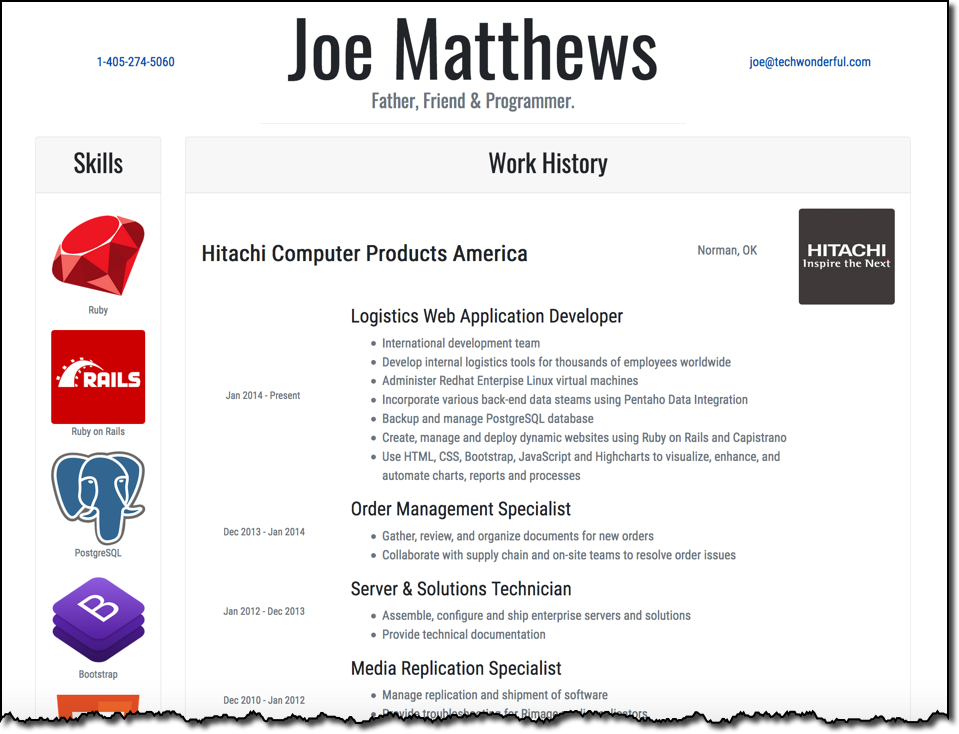Note
I created this resume back in 2018. It is not up to date with my current information, but this repo may still be useful to others who would like to create an online resume for themselves.
I created this project as an easy way for keeping my resume up to date. You can see my current resume here.
The magic lies in the data files in the _data directory. I use json to store all of my skills, work history and education including references to links and images. Then I use the Liquid templating language of Jekyll to enumerate over the json objects to generate the view.
Bootstrap takes care of the visuals. For my template I use a 24 column grid -- I find that the more columns the better for detailed work.
All CSS is compiled into one file -- including bootstrap, custom fonts & social media icons. Checkout the assets/main.scss & _sass/custom-bootstrap.scss files to see how it's all put together.
I plan to turn this template/project into an offical Jekyll theme gem with blog support. Look forward to that. In the meantime please feel free to use this project as a starting point for your Jekyll-based resume.
To get this project working locally on you computer you can follow these basic steps.
I highly recommend github's article on the subject.
Mac OS and most Linux distributions come with Ruby installed. I highly recommend using rbenv to manage different ruby versions for each project.
For all other methods for installing Ruby, including Windows, check out this page.
Installing Jekyll is quite simple once Ruby is up and running. Jekyll's official documentation is excellent, but running these commands will get you going:
git clone https://github.com/joematthews/resume.git
cd resume
gem install jekyll bundler
bundle exec jekyll serveThen, you should be able to see the resume at http://127.0.0.1:4000/resume/.
- Data files located in the _data directory.
- The config file, _config.yaml
- The template, index.html
